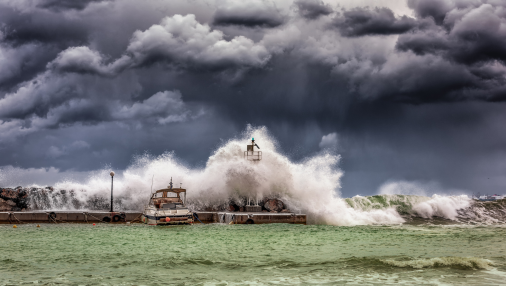Tsunami Strikes After Major Russia Earthquake: What Japan and Russia Faced
On July 30, 2025, a powerful magnitude 8.8 earthquake struck off the coast of Russia’s Kamchatka Peninsula, triggering tsunami alerts and evacuations across the Pacific—including Japan, Hawaii, Alaska, and Russia itself. This seismic event underscored the importance of international early warning systems and disaster preparedness.
1. The Earthquake and Initial Impact
The shallow 8.8 magnitude quake, centered 120 km off Petropavlovsk‑Kamchatsky at a depth of 19–20 km, was the strongest in the region since 1952. It generated tsunami waves of 3–5 meters in parts of Kamchatka and Severo-Kurilsk, causing flooding and property damage. Around 2,000 residents were evacuated, but no fatalities were reported.
2. Warnings and Evacuations in Japan
Japan's Meteorological Agency issued tsunami warnings across multiple prefectures. Nearly 2 million people were evacuated, including precautionary measures near the Fukushima nuclear facility. Fortunately, waves observed in Japan’s Hokkaido and Pacific coastlines were only about one meter high, and evacuation orders were lifted within hours.
3. Broader Pacific Alerts and Response
Tsunami warnings extended across the Pacific "Ring of Fire," including Alaska, Hawaii, California, Indonesia, and New Zealand. In Hawaii, waves of up to 1.5 meters arrived and sirens were sounded for the first time in over a decade, though significant damage was avoided.
4. Historical Context of Russia–Japan Tsunamis
The Kuril-Kamchatka subduction zone is notorious for powerful quakes and tsunamis. Historical disasters include the 1952 Severo-Kurilsk earthquake, which caused 18 m high waves and killed over 2,300 people, and the 2006 Kuril Islands earthquake that produced 22 m waves locally.
5. Why Powerful Tsunamis Threaten Faraway Lands
Tsunamis travel across entire ocean basins at jetliner speeds. Modeling predicted waves up to 3 m in Japan, though observed waves were smaller. Japan’s robust early warning and evacuation systems—developed after the 2011 disaster—helped avoid casualties.
6. Human Stories and Early Warning in Action
Residents in Japan’s Hokkaido took shelter on high ground and rooftops as sirens blared. In Kamchatka, videos showed waves flooding coastal villages and sweeping boats away. Hawaii residents shared rare recordings of tsunami sirens ringing across the islands.
7. Lessons and Moving Forward
- International coordination allowed fast sharing of tsunami threat updates.
- Investment in tsunami modeling and buoy networks remains critical.
- Public drills and awareness continue to save lives in coastal communities.
Conclusion
The Kamchatka earthquake was one of the strongest in decades, yet effective early warning systems and preparedness in Japan and Russia minimized the loss of life. The event reminds the world that with robust infrastructure and cross-border cooperation, even catastrophic natural events can be managed with resilience.

